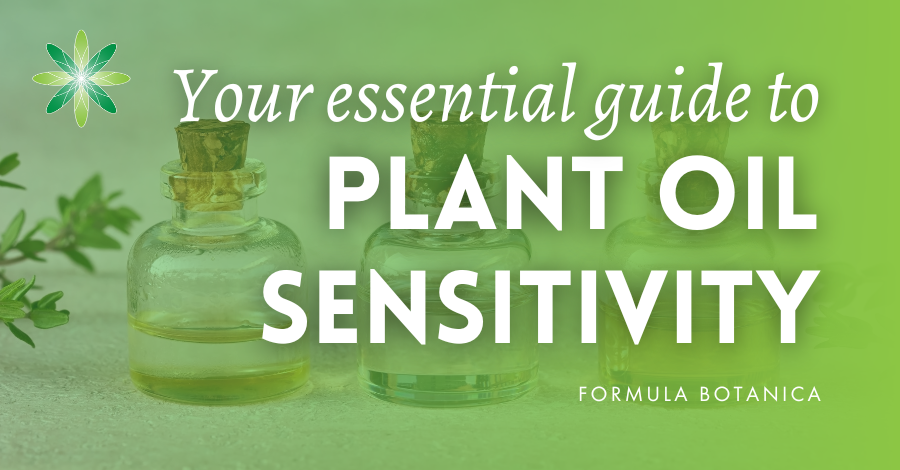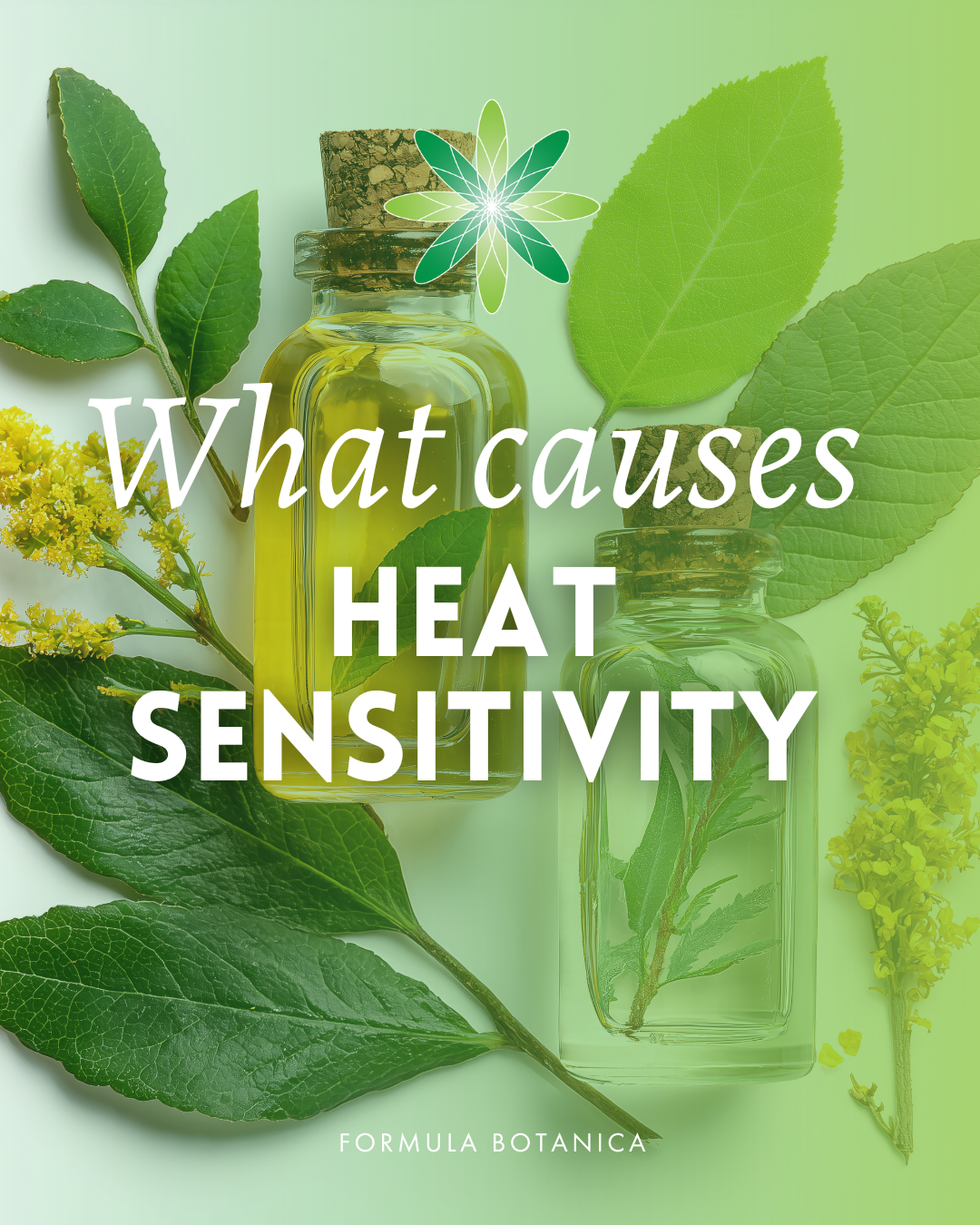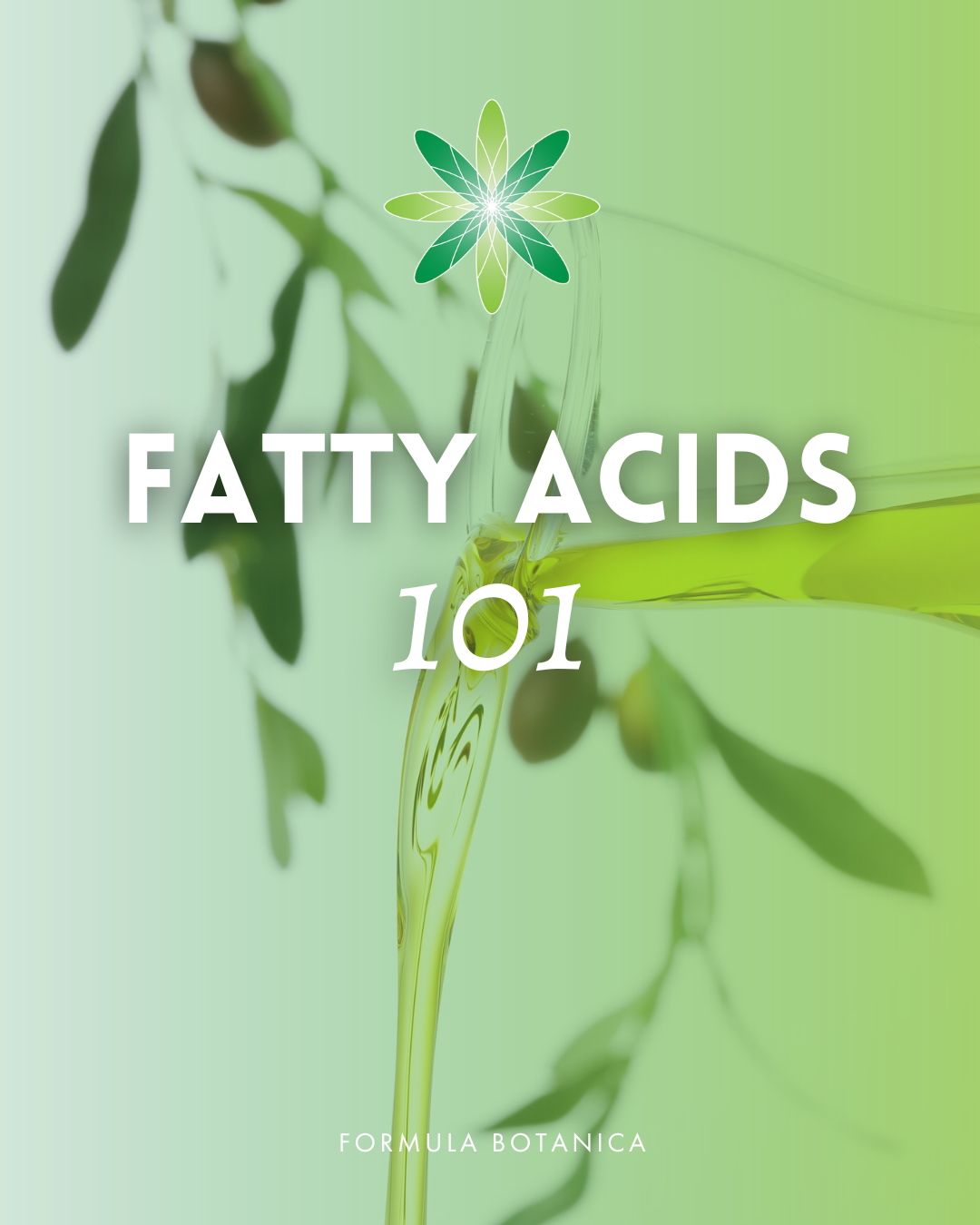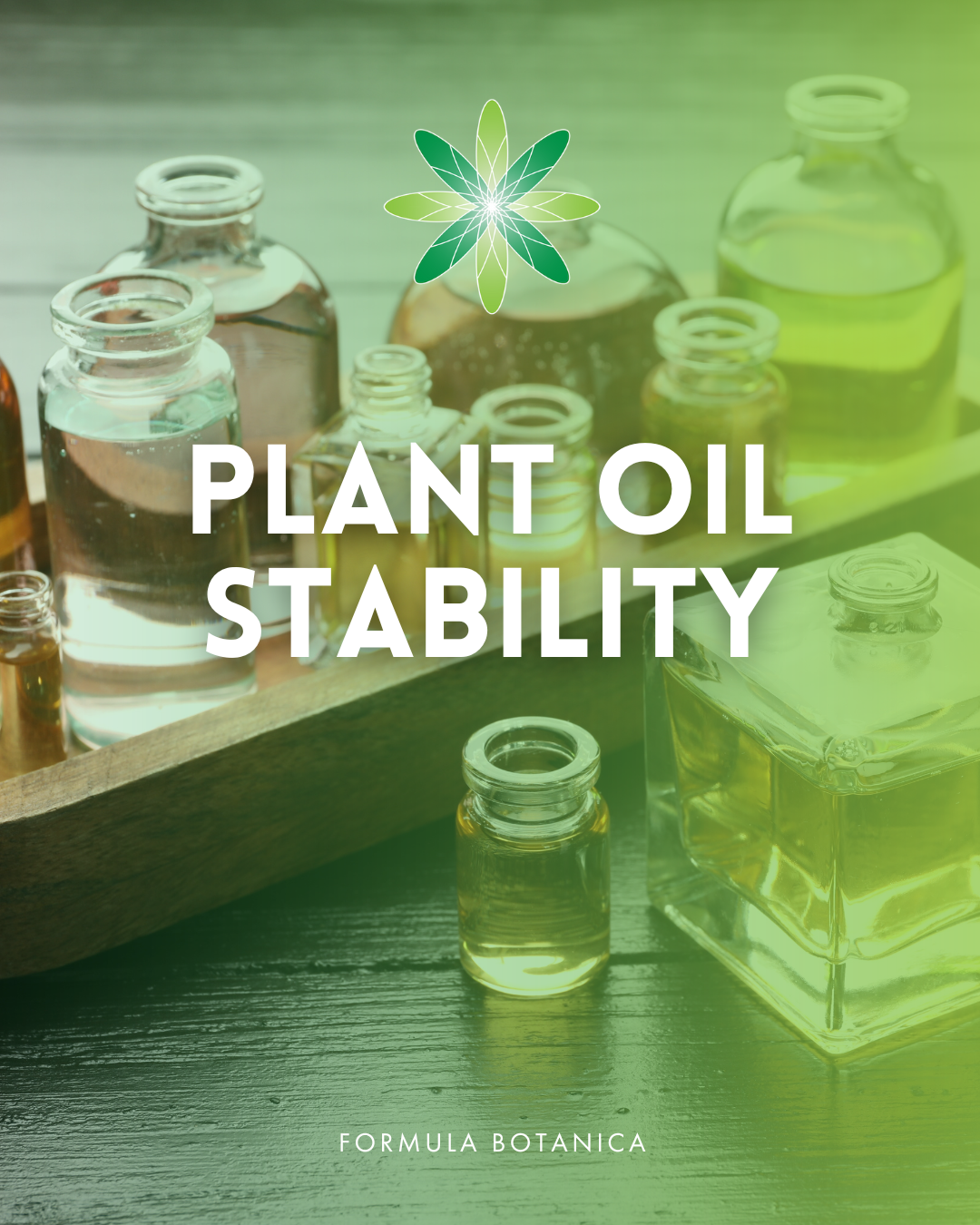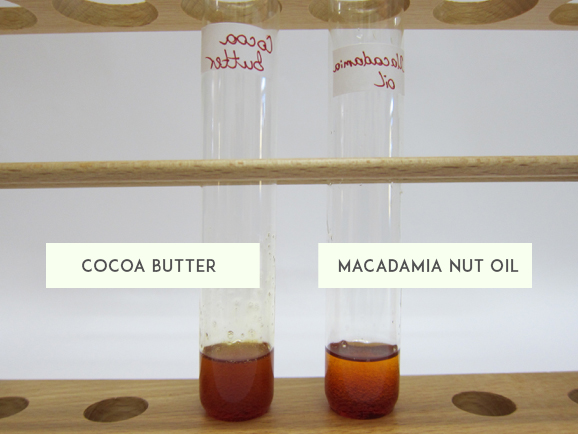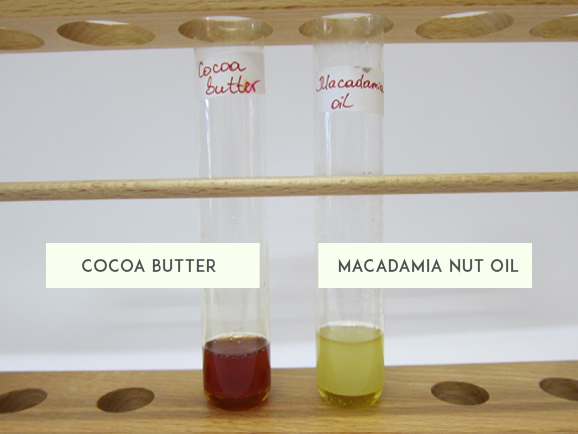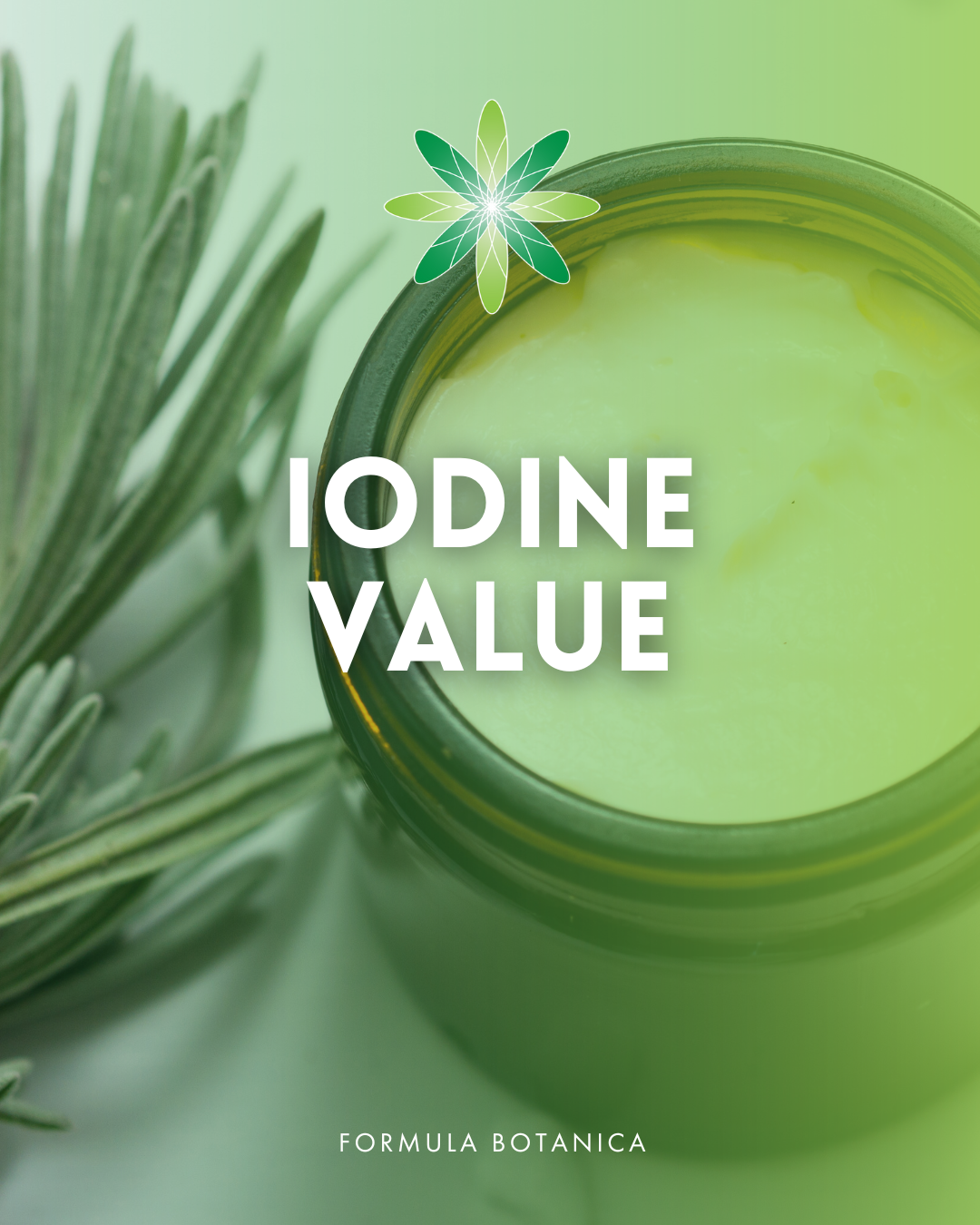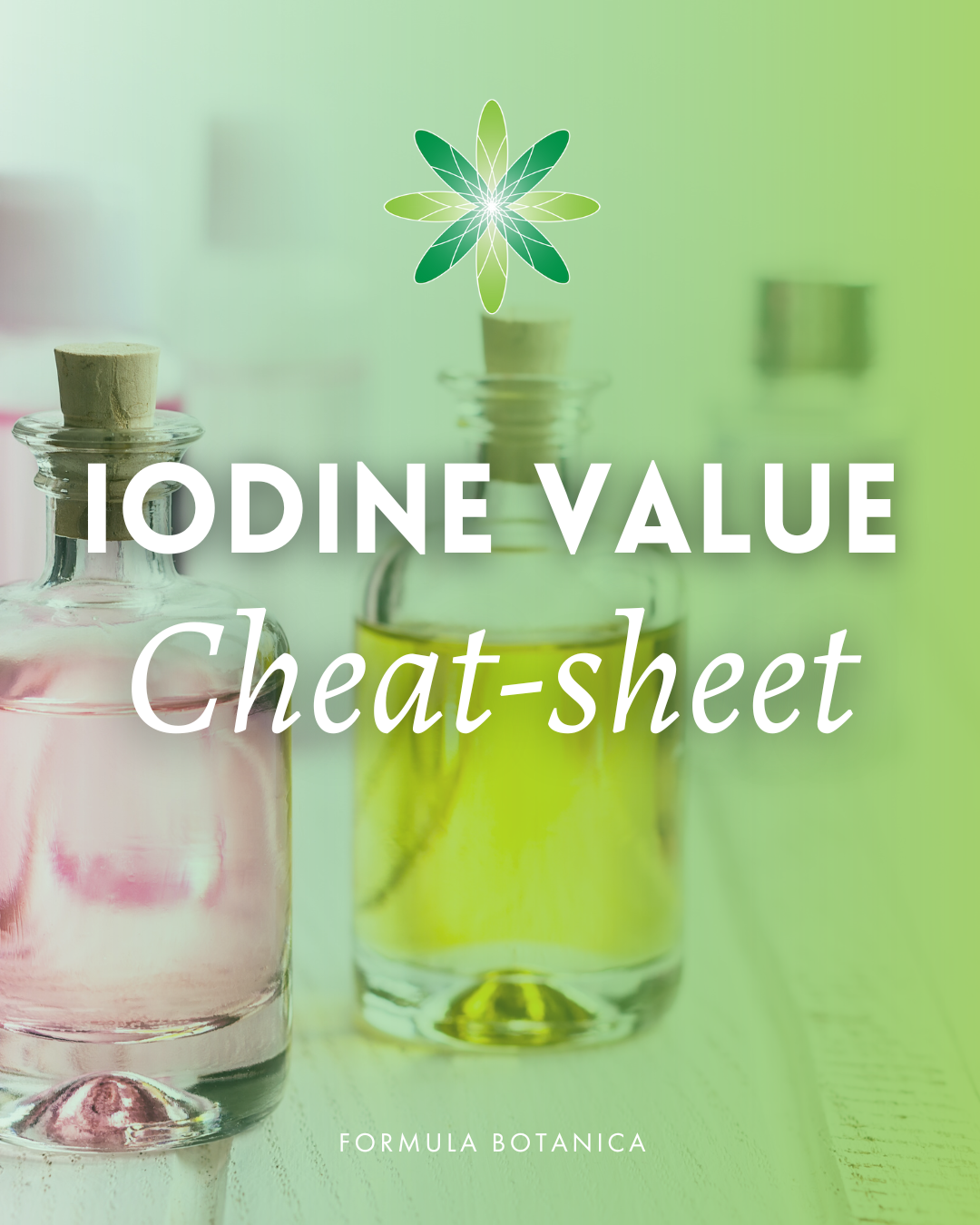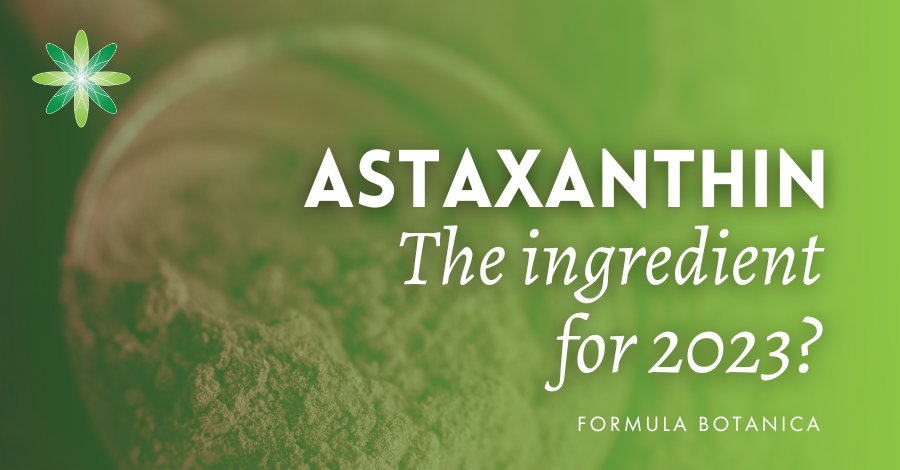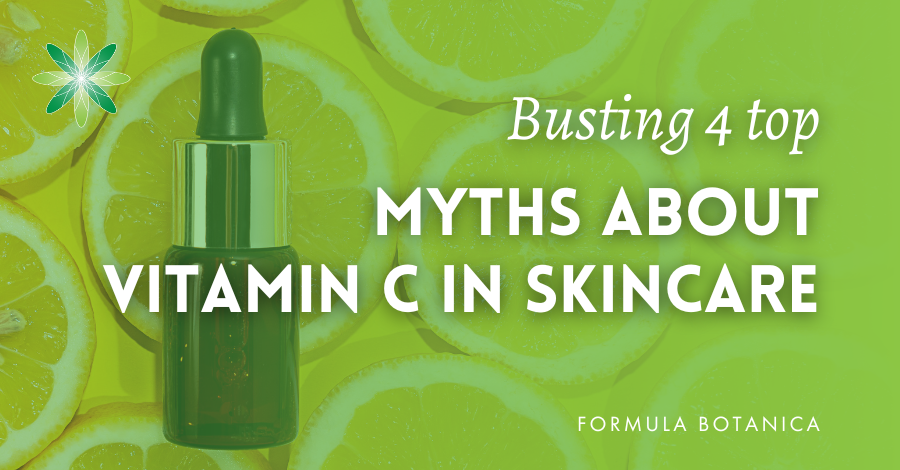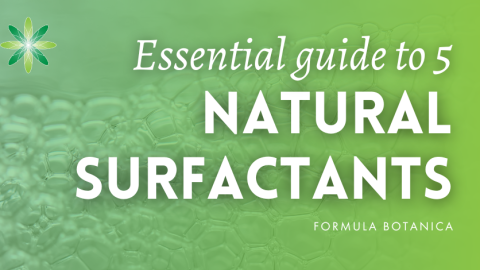Updated: 18.11.25
Have you ever wondered why some plant oils spoil within a matter of weeks or months, while others remain fresh for years? I certainly did when I first started formulating.
My rosehip oil would lose its bright colour and delicate scent long before my coconut oil even showed a hint of age. I’ve also often made the mistake of overheating precious oils when formulating a balm or an emulsion, only to notice it smelling a little off later!
The good news is that there’s a simple way to predict an oil’s heat sensitivity before you start formulating, so you know what its shelf life is and if you can heat it. Chemists call it the iodine value.
Let me walk you through what it means and how you can use it to protect your precious botanical oils and your formulations!
What makes a plant oil heat-sensitive?
Plant oils aren’t all created equal. Some are more sensitive to heat or prone to oxidation than others (meaning they go rancid). That’s because each oil contains a unique blend of fatty acids, and those fatty acids determine how an oil behaves when it’s exposed to light, air and heat.
Here’s the key idea:
- Oils rich in unsaturated fatty acids (those with more carbon-carbon double bonds) are more delicate and degrade faster. Their carbon-carbon double bonds are more reactive and prone to oxidation, which leads to rancidity and spoilage. Examples include olive oil, avocado oil, primrose oil, argan oil, and jojoba oil.
- Oils with mostly saturated fatty acids are more robust and can handle heat better. Unlike unsaturated fatty acids, saturated have single bonds which are stronger and unreactive, which prevents oxidation and rancidity. Examples include coconut oil, shea butter, cocoa butter, and mango butter.
That’s why rosehip oil – which is full of polyunsaturated fatty acids – has a short shelf life (as low as 3 months), while coconut oil, which is mostly saturated, can last for years (as high as 3 years!).
Fatty acids explained
Plant oils consist of various fatty acids, which are the basis of any fat or oil we use. These fatty acids, which are the building units of plant oils, are combined in groups of three, hence the name triglycerides.
You have probably already heard of fatty acids such as:
- Palmitic acid
- Linoleic acid
- Oleic acid
- Stearic acid
If you want the full technical, scientific explanation, fatty acids are carboxylic acids with a chain attached to them. The chain is a line of carbons with hydrogens attached to them. The length of the chain and the amount of hydrogen determine the characteristics of the chain.
When the chain has a full house of hydrogen, we call this saturated; when the house isn’t full, it’s unsaturated. When we have three of these fatty acids connected by glycerol, we call them triglycerides.
But don’t worry, you don’t need to understand all this to make safe and effective cosmetic products at home!
All you need to know is that acids can be grouped into saturated, monounsaturated (MUFA) or polyunsaturated (PUFA) fatty acids. As the name reveals, the MUFA has only one unsaturated carbon-carbon bond, while PUFAs have two or more unsaturated carbon-carbon bonds.
Why some plant oils are more heat sensitive than others
Certain plant oils can have very short shelf lives and go rancid quickly. Heat particular oils for too long, and you risk reducing their shelf life and making them more prone to oxidation.
The double bonds in unsaturated fats are more reactive than single bonds because they are more easily broken. When exposed to oxygen in the air, light, or heat, these double bonds can react with oxygen molecules, starting a chain reaction called oxidation.
Butters and waxes, for example, have a low content of unsaturated fatty acids, whereas liquid oils have a much higher content of unsaturated fatty acids.
So if you’re formulating with more sensitive oils, make sure to add them in the cool-down phase of your formulation (generally under 40°C), as heating the oil could reduce the ingredient’s shelf life and damage its beneficial properties.
As an example, let’s look at two common lipids – macadamia oil and cocoa butter – and how they behave at different temperatures. Macadamia oil is unsaturated, whereas cocoa is saturated.
Macadamia oil
Macadamia nut oil contains about 90% unsaturated fatty acids; therefore, it remains liquid even in winter.
Cocoa butter
Cocoa butter, on the other hand, contains only about 37% unsaturated fatty acids and hence it remains solid at room temperature.
Stability of plant oils
Plant oils, like many other natural ingredients, have a lower shelf life compared to synthetic cosmetic ingredients. When plant oils deteriorate, this process is generally known as rancidity.
There are three main types of rancidity that can occur in plant oils:
- Oxidative rancidity: Occurs when the oil reacts with oxygen, causing the fats to break down.
- Hydrolytic rancidity: Happens when water or enzymes (such as lipases) break fats down into free fatty acids.
- Microbial rancidity: Caused by microorganisms such as bacteria, moulds, or yeasts, which use their enzymes to alter the oil’s chemical structure.
These processes can be accelerated by factors such as heat, light exposure, moisture, time, and the presence of certain metals. As a result, the oil may develop unpleasant odours, off-flavours, or changes in texture.
Again, please don’t worry if this sounds technical! This information is simply to give you some scientific background. You don’t need to fully understand these reactions in order to formulate your products successfully.
Iodine value: What is it and how does it work?
The iodine value measures how many unsaturated bonds are present in a fat or oil, so you know if the oil you want to use is heat-stable or not.
In cosmetic labs, chemists add a purple-brown-coloured iodine solution to a lipid (meaning an oil, butter, or wax) to calculate the iodine value. The iodine reacts with the double bonds – each bond “soaks up” a little iodine. The more iodine absorbed, the higher the degree of unsaturation and the more heat-sensitive the oil.
I’ve performed an experiment to demonstrate how iodine reacts with a lipid. I’ve added iodine to macadamia and cocoa butter. In this first photo, you can see that iodine has just been added to the two ingredients:
When there are no unsaturated bonds in the lipid, the iodine remains intact, and the solution remains purple-brown. When there are unsaturated bonds in the lipid, they react with the iodine, and the mixture turns colourless. In this second photo, you can now see that the macadamia nut oil has completely changed colour:
See how the iodine changes colour in two different lipids?
This is a very simplistic way of demonstrating the iodine value, but if you want to know the exact measurement, then you will, of course, have to undertake a far more precise experiment to calculate the oil’s iodine value. The iodine value is defined as the weight of iodine (in grams) absorbed by 100g of the oil.
Don’t worry: you don’t need to perform this test yourself. Your supplier’s Technical Data Sheet (TDS) or Certificate of Analysis will usually list the iodine value or a range. You can learn more about these technical documents below:
Shelf life & iodine value
The iodine value is a good determinant of the stability and shelf life of the plant oils/butters/waxes you work with. However, please keep in mind that there is no rule of thumb or linear relationship between the iodine value of the oil and its shelf life. This is not an exact science; it’s just a helpful guide.
The shelf life, apart from the iodine value and the nature of the lipid, depends on many other factors such as extraction method, refined vs. unrefined oils, additives (antioxidants such as tocopherol or rosemary extract), storage conditions, and more.
Generally, we say that the higher the iodine value of your lipid, the more sensitive it is. So it means you need to keep your raw material away from light, oxygen, and heat.
When formulating, you should add these heat-sensitive oils during the cool-down phase. You should also remember that the higher the content of such lipids in your finished formulation, the more sensitive your overall product will be, as natural ingredients tend to be more sensitive than synthetic ones.
Want to learn more about stability testing and shelf life? Then check out our award-winning Diploma in Organic Skincare Formulation, where you’ll learn how to formulate safe and effective natural skincare from home!
Your heat sensitivity cheat-sheet
When determining the heat sensitivity of lipids, we need to consider other factors such as the presence of unsaponifiables (particularly tocopherols and carotenoids), temperature and method of extraction, origin of the oil, etc. My advice is that you avoid heating oils with an iodine value higher than 100. If you take anything away from this post, let it be this.
Thermal degradation of the fatty acid depends both on the temperature and the exposure time. This is why you need to avoid overheating your oils. You can heat your sensitive oil (if really necessary) for a very short period. Please do not use the heat and hold method when making emulsions.
Another point to note is that the iodine value is usually mentioned as a range in scientific literature because the exact iodine value might vary from batch to batch and from harvest to harvest, depending on the exact fatty acid profile of a given oil. Always double-check your supplier’s data sheets before you start formulating with new ingredients.
The iodine value is a characteristic of the lipid that is usually mentioned in its Technical Data Sheet or the Certificate of Analysis (not always in the Safety Data Sheet).
Below, I’ve included a cheat-sheet table with iodine value ranges of 84 different lipids, which will help you determine whether your plant oil is likely to show heat sensitivity!
| Common Name | INCI Name | Iodine Value |
| Acai fruit oil | Euterpe Oleifera Fruit Oil | 60-90 |
| Andiroba oil | Carapa Guaianensis Seed Oil | 65-75 |
| Apricot kernel oil | Prunus Armeniaca Kernel Oil | 104-112 |
| Argan oil | Argania Spinosa Kernel Oil | 96-99 |
| Avellana oil | Gevuina Avellana Seed Oil | 137-147 |
| Avocado oil | Persea Gratissima Oil | 65-95 |
| Babassu oil | Orbignya Oleifera Seed Oil | 10-17 |
| Bacuri oil | Platonia Insignis Seed Oil | 50-65 |
| Baobab oil | Adansonia Digitata Seed Oil | 76-78 |
| Black cumin seed oil | Nigella Sativa Seed Oil | 107-123 |
| Blackcurrant | Ribes Nigrum Seed Oil | 160-175 |
| Borage seed oil | Borago Officinalis Seed Oil | 140-155 |
| Brazil nut oil | Bertholletia Excelsa Seed Oil | 90-110 |
| Broccoli seed oil | Brassica Oleracea Italica Seed Oil | 90-120 |
| Buriti oil | Mauritia Flexuosa Fruit Oil | 50-75 |
| Camelina seed oil | Camelina Sativa Seed Oil | 124-153 |
| Camellia seed oil | Camellia Sinensis Seed Oil | 80-87 |
| Castor oil | Ricinus Communis Seed Oil | 81-91 |
| Cherry kernel oil | Prunus Cerasus Seed Oil | 95-115 |
| Chia seed oil | Salvia Hispanica Seed Oil | 190-199 |
| Cocoa butter | Theobroma Cacao Seed Butter | 33-42 |
| Coconut oil | Cocos Nucifera Oil | 7-10 |
| Coffee seed oil | Coffea Arabica Seed Oil | 76-101 |
| Coriander seed oil | Coriandrum Sativum Seed Oil | 88-102 |
| Corn oil | Zea Mays Germ Oil | 103-131 |
| Cottonseed oil | Gossypium Herbaceum Seed Oil | 101-117 |
| Cranberry seed oil | Vaccinium Macrocarpon Seed Oil | 140-180 |
| Cucumber seed oil | Cucumis Sativus Oil | 110-140 |
| Cupuaçu butter | Theobroma Grandiflorum Seed Butter | 40-50 |
| Elderberry seed oil | Sambucus Nigra Seed Oil | 170-190 |
| Evening primrose oil | Oenothera Biennis Oil | 147-155 |
| Flaxseed oil/Linseed oil | Linum Usitatissimum Seed Oil | 170-204 |
| Grapeseed oil | Vitis Vinifera Seed Oil | 123-143 |
| Hazelnut oil | Corylus Avellana Seed Oil | 83-90 |
| Hemp seed oil | Cannabis Sativa Seed Oil | 143-166 |
| Jojoba oil | Simmondsia Chinensis Seed Oil | 78-90 |
| Kiwi seed oil | Actinidia Chinensis Seed Oil | 180-220 |
| Kukui nut oil | Aleurites Moluccanus Seed Oil | 136-175 |
| Macadamia nut oil | Macadamia Ternifolia Seed Oil | 74-76 |
| Mango butter | Mangifera Indica Seed Butter | 40-60 |
| Marula oil | Sclerocarya Birrea | 70-80 |
| Meadowfoam seed oil | Limnathes Alba Seed Oil | 90-102 |
| Moringa oil | Moringa Oleifera Seed Oil | 65-72 |
| Murumuru butter | Astrocaryum Murumuru Seed Butter | 10-15 |
| Mustard seed oil | Sinapis Alba Seed Oil | 95-120 |
| Neem oil | Azadirachta Indica Seed Oil | 65-85 |
| Olive oil | Olea Europaea Fruit Oil | 78-90 |
| Palm oil | Elaeis Guineensis Fruit Oil | 49-55 |
| Palm kernel oil | Elaeis Guineensis Kernel Oil | 14-21 |
| Ojon oil | Elaeis Oleifera Fruit Oil | 50-70 |
| Papaya seed oil | Carica Papaya Seed Oil | 70-80 |
| Passionfruit seed oil | Passiflora Edulis Seed Oil | 130-145 |
| Peach kernel oil | Prunus Persica Kernel Oil | 94-110 |
| Peanut oil | Arachis Hypogaea Oil | 85-90 |
| Pecan oil | Carya Illinoensis Oil | 97-120 |
| Pequi fruit oil | Caryoca Brasiliense Fruit Oil | 40-55 |
| Perilla seed oil | Perilla Ocymoides Seed Oil | 196-206 |
| Pistachio nut oil | Pistacia Vera Seed Oil | 86-101 |
| Plum kernel oil | Prunus Domestica Seed Oil | 90-120 |
| Pomegranate seed oil | Punica Granatum Seed Oil | 210-250 |
| Poppy seed oil | Papaver Somniferum Seed Oil | 133-197 |
| Pracaxi oil | Pentaclethra Macroloba Seed Oil | 90-105 |
| Prickly pear seed oil | Opuntia Ficus-Indica Seed Oil | 100-130 |
| Pumpkin seed oil | Cucurbita Pepo Seed Oil | 113-134 |
| Rapeseed oil | Brassica Campestris Seed Oil | 94-120 |
| Raspberry seed oil | Rubus Idaeus Seed Oil | 160-195 |
| Rice bran oil | Oryza Sativa Germ Oil | 89-108 |
| Rosehip oil | Rosa Canina Fruit Oil | 152-169 |
| Sacha inchi seed oil | Plukenetia Volubilis Seed Oil | 183-199 |
| Safflower oil | Carthamus Tinctorius Seed Oil | 140-150 |
| Sea buckthorn berry oil | Hippophae Rhamnoides Fruit Oil | 60-70 |
| Sea buckthorn kernel oil | Hippophae Rhamnoides Seed Oil | 130-200 |
| Sesame oil | Sesamum Indicum Seed Oil | 100-120 |
| Shea butter | Butyrospermum Parkii Butter | 50-70 |
| Soybean oil | Glycine Soja Oil | 125-140 |
| Strawberry seed oil | Fragaria Vesca Seed Oil | 175-190 |
| Sunflower oil | Helianthus Annuus Seed Oil | 118-145 |
| Sweet almond oil | Prunus Amygdalus Dulcis Oil | 93-105 |
| Tamanu oil | Calophyllum Tacamahaca Seed Oil | 99-108 |
| Tomato seed oil | Solanum Lycopersicum Seed Oil | 107-125 |
| Walnut oil | Juglans Regia Seed Oil | 135-151 |
| Watermelon seed oil | Citrullus Lanatus Seed Oil | 97-128 |
| Wheat germ oil | Triticum Vulgare Germ Oil | 115-128 |
Note: The iodine values in the table above were provided courtesy of SkinChakra. These values are extracted from reliable books, journal articles and data sheets. It is possible that you might stumble upon a book or a data sheet with a slightly variable range for a certain iodine value. The deviation should, however, be less than 20%. Remember to always double-check your supplier’s recommendation first.
Final thoughts
I hope I managed to shed some light on the sensitivity of plant oils and that these guidelines help you choose the right oils for your formulations!
There are many wonderful plant oils on the market now, so I can encourage you to try them, experiment with them and continue creating more fantastic skincare and haircare formulations. If you’re interested to learn more, you’ll like these previous articles:
- 10 best winter carrier oils
- 5 Amazonian butters for organic skincare
- 8 best oils for botanical oil infusions
- Guide to choosing the best oils for botanical macerations
Understanding heat sensitivity is just one part of creating stable, professional formulations. If you’d like to learn more about how to make safe and effective cosmetic products from home, check out our free training course, where you’ll learn how to make botanical skincare from scratch!
Alternatively, check out our award-winning foundation Diploma in Organic Skincare Formulation.
FAQ
- How can I tell if an oil has gone rancid?
Check the smell first: a sour or paint-like scent is a warning. A dark colour or sticky texture also means it’s time to toss it.
- Do I need to test the iodine value myself?
No, you don’t! Simply ask your ingredient supplier for the Technical Data Sheet (SDS) or Certificate of Analysis (COA). Sometimes, this is already provided on the ingredient’s page.
- Which oils handle heat best?
Low-iodine oils like coconut oil or cocoa butter are naturally more stable. Look for oils high in saturated bonds.
- Can antioxidants help?
Yes! Vitamin E or rosemary extract can help slow oxidation and extend the shelf life of both your oil and final formulation.
- Which carrier oil is best for sensitive skin?
Jojoba oil, which is in fact a wax but liquid at room temperature, is an ideal carrier oil to use in cosmetics aimed at sensitive skin. Jojoba oil has properties that align with our sebum and is widely accepted as a neutral, non-irritating and skin-tolerated carrier oil. Another soothing oil is calendula, which is usually a macerate in sunflower or sweet almond oil. Oat bran oil is also ideal for use on irritated, dry and sensitive skin.
- Where can I learn to formulate safe and effective natural skincare products?
Join thousands of other formulators and register for our free training today!
FREE TRAINING
Learn how to become an
Organic Skincare Formulator
FREE TRAINING
How to become an
Organic Skincare Entrepreneur
FREE TRAINING
How to become an
Organic Skincare Entrepreneur
Leave us a comment

Dr. Elham Eghbali was Formula Botanica’s Cosmetic Chemist between 2014 and 2018. She has over 20 years’ industry experience and is based in Bavaria, Germany. To read more about Formula Botanica’s team, visit our staff page.

